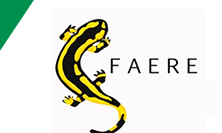Highly migratory species, such as tunas and tuna-like species, represent both economically and biologically significant stakes for the world fisheries. The Eastern Atlantic Bluefin tuna (EABFT) is one of the most charismatic tuna species and faces today a critical phase in its management. After a long period of over-exploitation, the signals from the stock assessment are positive and the population seems to have fully recovered. In the present research, we estimate the optimal management strategy, which refers to the dynamic maximum economic yield concept (MEY), for the EABFT based on an age-structured bio-economic model in line with the current assessment of the stock by the International Commission for the Conservation of Atlantic Tunas (ICCAT). Using optimization method and taking total allowable catch (TAC) directly as the state variable, we show that the bio-economic optimal management strategy follows a smooth path converging toward the spawning stock biomass (SSB) steady state which is well above SSB at the maximum sustainable yield (MSY) level whatever the recruitment or global supply scenarios considered. Integrating selectivity as a state variable, the optimal strategy remains close to the current one with a more balanced fishing mortality over all age classes. Finally, applying stochastic dynamic programming, we show that stock measurement errors, which represent a critical issue for highly migratory fish stocks, do not affect the optimal management. The MEY harvest policy estimated is robust to measurement errors. Our results indicate that adopting a new policy based on the dynamic maximum economic yield (MEY) could meet both conservation and economic objectives for the EABFT fishery.
Programme > Papiers par auteur > Guillotreau PatriceOptimal bioeconomic management of the Eastern Atlantic Bluefin tuna fishery: where do we stand after the recovery plan?
1 : Laboratoire d\'économie et de management de Nantes Atlantique
(LEMNA)
-
Site web
Université de Nantes : EA4272
2 : MARine Biodiversity Exploitation and Conservation
(UMR MARBEC)
-
Site web
Institut de Recherche pour le Développement : UMR_D 248, Institut français de Recherche pour l'Exploitation de la Mer : UMR9190, Université de Montpellier : UMR9190, Centre National de la Recherche Scientifique : UMR9190
Centre de Sète UMR MARBEC SETE - Avenue Jean Monnet - CS3017134203 SETE CEDEX -
France
3 : Université de Nantes
(Univ. Nantes)
-
Site web
Université Nantes Angers Le Mans
IEMN-IAE
Chemin Censive du Tertre
BP 52231
44322 Nantes Cedex 3 -
France
4 : Ecosystèmes marins exploités
(EME)
-
Site web
IFREMER
CRH-EME Avenue Jean Monnet BP 171 34203 Sète cedex France -
France
|




